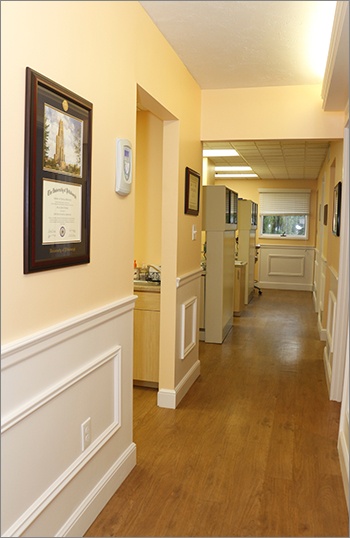What is the Zoning Classification for Dental Offices?
Posted by HJT Design
You’re ready to hang out the shingle on a gem of a property. The visibility is good, the dentists to patients ratio is good, the demographic studies are very favorable, you made an offer and got the deed… Now it’s time to get the remodeling started, right?
Not so fast.
Are you located within a zoning district which allows dentist offices?
The answer could be the start of your next migraine or heart burn.
Listen To The Podcast
 Where To Start?
Where To Start?
If you haven’t a clue about zoning districts then it’s time to get acquainted. Zoning classification for dental offices is different in just about every state.
Zoning districts are a component which municipalities use to control and regulate land development within their limits.
There are typically three main types of districts:
- residential (R),
- commercial (C)
- manufacturing (M).
The three basic districts are further divided into a range of lower, medium and high-density residential, commercial and manufacturing districts to accommodate an extraordinary variety of building forms and permitted uses.
Regulations
Each zoning district regulates:
- Permitted uses listed in one or more of 18 use groups.
- The size of the building in relation to the size of the lot, known as the floor to area ratio(commonly referred to as FAR).
- Residential uses, the number of dwelling units permitted, the amount of open space and plantings required on the zoning lot and the maximum amount of the lot that can be covered by a building.
- The distance between the building and the front, side, and rear, and lot lines.
- The amount of required or permitted parking.
- Other features applicable to specific residence, commercial, or manufacturing districts.
Zoning districts may in turn be overlaid by to achieve specific planning and urban design objectives in defined areas with unique characteristics.
Rezoning
Rezoning a residential property within a residential district into a commercial use property (particularly medical and dental, which are considered high value services) requires approval for Special Use permits.
The process takes time and some expense and if granted approval, the property will have to be developed to abide by all zoning ordinances applicable to commercial district regulations.
A few strokes of the keyboard or a phone call to the city’s Zoning Department can provide you with the answer you need or prepare you to take steps necessary to rezone the property.
It’s best to have your answer prior to the purchase of a property.
Is It Right For Dentists?
Redeveloping residential property into commercial use, especially for small land parcels, presents more challenges than large property parcels.
Aside from Zoning ordinances, residential structures being rehabed for commercial uses requires diligent attention to the Americans with Disabilities Act guidelines for compliance with accessibility-related items.
Working With A Dental Architect
HJT welcomes the opportunity to discuss your project needs and apply our expertise and experience in assisting you to achieve your practice objectives.
Regardless of the magnitude and complexity of your project, our staff of experienced professionals are poised and ready to help navigate you through the process and fulfill your specific needs.
If you’re not too sure where or how to start with the process, contact HJT to schedule a free consultation for answers and knowledge to prepare and empower you in moving forward with confidence.